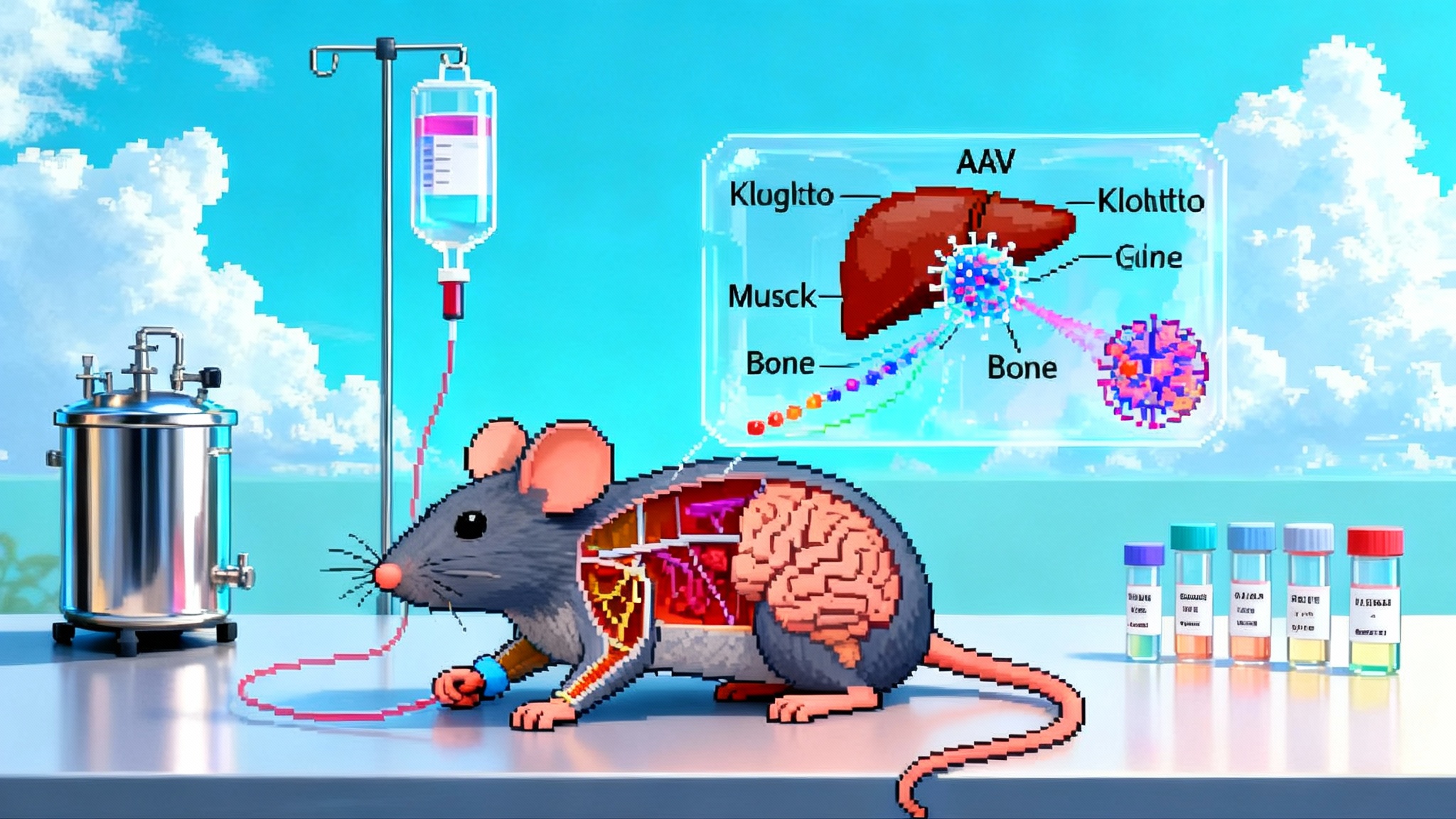PEARL’s year-long rapamycin trial: what it really shows
PEARL's 48-week randomized trial in healthy adults reports acceptable safety, sex-specific gains in lean mass, and less pain in women, with no change in visceral fat. Here is what that means for healthspan and what a real Phase 3 must prove.

The first long look at rapamycin in healthy aging humans
If you care about human healthspan, April 4, 2025 was a milestone. That is when the year-long PEARL trial published its primary results in Aging, offering the first randomized, double-blind, placebo-controlled readout of weekly rapamycin in generally healthy adults over 48 weeks. You can read the open access paper at the PEARL trial results paper. The short version: safety looked acceptable, women on the higher dose gained lean tissue and reported less pain, and visceral fat did not budge.
This was not a longevity trial that could show more years lived. It was a healthspan study that asked whether a drug that targets the mTOR pathway can nudge physical composition and quality of life in the right direction without unacceptable tradeoffs. Below I unpack what changed, what did not, where the methods help or hurt confidence, and what a definitive Phase 3 should measure to move from interesting signal to clinical claim.
Trial design in one minute
- Who: Adults 50 to 85, recruited from a health-conscious community, generally healthy or with stable conditions.
- Size: 114 participants completed the study; an additional 11 discontinued before completion.
- Design: Decentralized RCT with weekly dosing for 48 weeks, plus standardized lab panels and surveys. Imaging was done by DXA at regional facilities.
- Arms: Placebo, 5 mg weekly, or 10 mg weekly of compounded sirolimus (rapamycin), taken once per week.
- Primary endpoint: Change in visceral adipose tissue (VAT) by DXA.
- Secondary endpoints: Lean tissue mass, bone metrics by DXA; safety labs; and validated patient-reported outcomes for pain and well-being.
One wrinkle matters. Mid-trial, the team paused after learning their compounded sirolimus produced much lower blood levels than commercial tablets. Follow-up work later quantified that difference and it was large. We will return to why this caveat cuts both ways.
What changed, and what did not
- Visceral fat: The primary endpoint did not improve. VAT changes were statistically null across groups at 48 weeks. A transient difference at 24 weeks in men did not hold and did not separate from placebo.
- Lean mass: Women assigned to the 10 mg weekly arm showed significant gains in lean tissue mass by DXA at both 24 and 48 weeks relative to placebo and to the 5 mg group. The reported effect size for this sex-by-dose interaction was in the medium range, which is notable for a single intervention over one year.
- Pain and well-being: Women on 10 mg reported less pain. In the 5 mg group, participants reported better emotional well-being and general health. These were prespecified survey measures, but not primary endpoints.
- Bone and blood biomarkers: Bone outcomes did not separate clearly by group. Routine safety labs stayed within normal ranges on average.
How big are these effects in the real world? DXA-based lean mass changes of a few percentage points in a year, if durable and accompanied by strength, can translate into easier stair climbing and lower fall risk. Pain reduction in older adults can have outsized value for activity, sleep, and mood. The VAT null result reminds us that not all aging-linked risk factors will move with the same dosing or schedule, and that body fat is stubborn without diet and activity changes.
Before you extrapolate, two guardrails. First, the female subgroup was small, especially in the 10 mg arm, so the positive signals need replication. Second, neither strength nor performance tests were primary outcomes, so we do not know if the lean mass gain improved function.
Safety signals in context
Across groups, adverse event counts were similar. Serious adverse events were rare and balanced, and most participants completed the study. Mild gastrointestinal symptoms were reported a bit more often in rapamycin users than placebo. Routine labs did not drift in concerning directions on average. That profile is consistent with the idea that low, intermittent TORC1 targeting can be tolerated in healthy adults when monitored.
This does not mean rapamycin is risk free. The drug has known interactions via CYP3A metabolism, can raise lipids in some users, and can complicate wound healing or infection risk at higher or chronic doses. The takeaway is narrower: weekly low-dose sirolimus over 48 weeks in a screened, health-conscious cohort did not produce an obvious safety signal compared with placebo.
The compounded bioavailability caveat
PEARL used compounded sirolimus for blinding convenience. During the trial, the team discovered that their compounded product delivered roughly one third the blood level at 24 hours compared with the same milligram dose of a commercial tablet. A dedicated analysis later estimated compounded bioavailability at about 31 percent of commercial and mapped typical time courses for blood levels after weekly dosing, showing peaks near day two and wide person-to-person variability. See the open access analysis on compounded rapamycin bioavailability.
This matters for two reasons.
- Under-dose bias: If many participants effectively received a lower active exposure than planned, any true benefits would be harder to detect. That makes the positive signals in women more interesting rather than less.
- Generalizability: Results with a specific compounded product do not automatically transfer to commercial tablets or to other compounded products with different processes and excipients. Real-world clinicians should not assume equal milligram-to-milligram equivalence. Measured drug levels can bridge that uncertainty.
How this fits with prior mTOR work in humans
PEARL looks at composition and symptoms over a year. Earlier human mTOR studies asked different questions and still matter for the healthspan story. Short courses of TORC1 inhibitors in older adults have been shown to improve influenza vaccine responses and reduce reported infections over the following year, suggesting immune aging can be modulated without chronic immunosuppression. Those studies were small to mid-sized and used rapalogs or TORC1-targeted combinations rather than weekly sirolimus. Together with PEARL, the picture is that intermittent TORC1 targeting can move select aging-linked outcomes in humans with acceptable short-term safety, but the scope and durability of benefit remain open.
Translating effect sizes into everyday relevance
- Lean mass: A medium effect size for female lean mass suggests a real, measurable change on DXA over one year. In day-to-day life, an older adult who keeps or slightly gains lean mass tends to maintain strength, which supports gait speed, balance, and independence. Pairing rapamycin with resistance training could be synergistic, but that combination was not tested here. For context on muscle-preserving strategies under active development, see the GLP-1 muscle-sparing race.
- Pain: Lower pain scores can unlock activity and sleep, which feed back into better cardiometabolic health. The mechanism could involve inflammation, nerve sensitivity, or indirect effects on activity. The trial did not adjudicate mechanism.
- Visceral fat: No change on VAT means rapamycin cannot be counted on to reshape body fat in healthy adults at these exposures. Diet, activity, and sleep remain first-line for visceral fat.
Bottom line for individuals: if you are a postmenopausal woman prioritizing musculoskeletal aging and pain, the PEARL signal is the most relevant. If you are targeting fat distribution, PEARL gives you no reason to expect a change at these doses.
Trial caveats that should temper takes
- Small N and imbalanced sex: Only 114 completers, with a small female sample and even smaller in the 10 mg arm. That inflates uncertainty and raises the chance of spurious subgroup findings.
- Decentralized DXA: Multiple sites and machines increase measurement noise. Normalizing to each person’s baseline helps but does not eliminate site effects.
- Endpoints and multiplicity: VAT was primary and was null. Positive findings were in secondary endpoints and subgroup analyses, which are hypothesis generating unless replicated under multiplicity control.
- Exposure misestimation: Because compounded sirolimus had far lower bioavailability, the nominal doses do not reflect actual exposure. That complicates dose-response interpretation and cross-trial comparisons.
- Healthy volunteer bias: Participants were health-conscious, with access and motivation. Results may not generalize to more diverse or frailer populations.
What a definitive Phase 3 should measure
To move rapamycin or related TORC1 strategies toward clinical geroprotection claims, a large, multicenter Phase 3 should:
- Power for people and subgroups: Enroll at least 800 to 1,200 participants, stratified by sex, age bands, and baseline function, with prespecified subgroup analyses and allocation that ensures adequate female representation at higher doses.
- Use verified drug exposure: Standardize on a commercial formulation or a certified compounded product with pharmacokinetic characterization. Monitor blood sirolimus levels at set times early and periodically to titrate to target exposures rather than milligram doses.
- Define clinically meaningful co-primary endpoints: For example, gait speed and chair-stand performance at 12 months, or a composite of Short Physical Performance Battery and grip strength. Require minimal clinically important differences, not only p values.
- Add hard health outcomes: Predefine a reduction in laboratory-confirmed respiratory infections, infection-related urgent care visits, or falls. Lessons from the St. Jude frailty trial can help define patient-centered endpoints.
- Include mechanistic biomarkers: TORC1 pathway readouts in blood cells, inflammatory markers, and validated biological age measures that are sensitive to intervention and archived for future assays. Treat epigenetic clocks as exploratory unless prevalidated for change detection and clinical correlation. This will intersect with how labs re-enter clinics after the FDA LDT rollback on biomarkers.
- Improve body composition phenotyping: Repeat DXA under a centralized quality program and add regional muscle size by ultrasound or MRI in a subset, with muscle strength and power testing alongside.
- Follow longer: Continue observation to 24 months to test durability and safety, with prespecified interim looks at infections and functional decline.
- Manage multiplicity and missingness: Use a statistical analysis plan that controls the family-wise error rate across endpoints and specifies strategies for decentralized data gaps.
Practical and ethical implications today
Nothing in PEARL should trigger casual off-label dosing without medical oversight. At the same time, many clinicians and self-experimenters are already exploring weekly sirolimus. PEARL offers a few pragmatic guardrails.
- Start with intent and monitoring: Define what you are trying to change and how you will measure it. Consider baseline and 12 to 24 week follow-ups for DXA, pain and function scores, and labs.
- Prefer known exposure: If you use compounded products, confirm actual exposure with timed sirolimus levels. If you use commercial tablets, recognize that inter-individual variability is still high.
- Screen and watch for risks: Review drug interactions, especially CYP3A inhibitors and inducers. Monitor lipids, glucose or A1C, complete blood counts, liver and kidney function. Hold dosing around major surgery and significant infections. Avoid in pregnancy and during attempts to conceive.
- Match dose to goal and tolerance: Weekly intermittent schedules aim to target TORC1 while avoiding chronic TORC2 inhibition. Dose should be individualized by exposure and tolerability, not by copying social media milligrams.
- Be honest about uncertainty: There is no evidence that weekly sirolimus extends human life. Healthspan signals are domain specific and preliminary. PEARL moves the field forward but does not settle it.
What PEARL changes in the healthspan conversation
PEARL shows that a year of weekly sirolimus can be delivered safely in healthy adults under monitoring, that women may gain lean tissue and experience less pain at higher weekly exposure, and that visceral fat will likely not change without lifestyle support. It also shows that formulation details matter for actual exposure, and that decentralized trials can be done but demand careful measurement design.
For clinicians, the study lowers the barrier to discussing rapamycin’s risks and potential domain-specific benefits with appropriately selected, well-informed patients. For scientists, it sets the bar for the kinds of outcomes and logistics a larger trial must tackle. For self-experimenters, it is a reminder to measure what matters, to avoid assuming that more is better, and to respect the difference between a promising signal and a proven therapy.
The next key step is a Phase 3 that ties exposure to functional gains and fewer clinically important events in a diverse population, with enough size to trust subgroup findings. If that study delivers, rapamycin could move from a provocative off-label tool to a true healthspan therapy. Until then, PEARL should be read as a careful first year of data rather than a verdict on human longevity.








